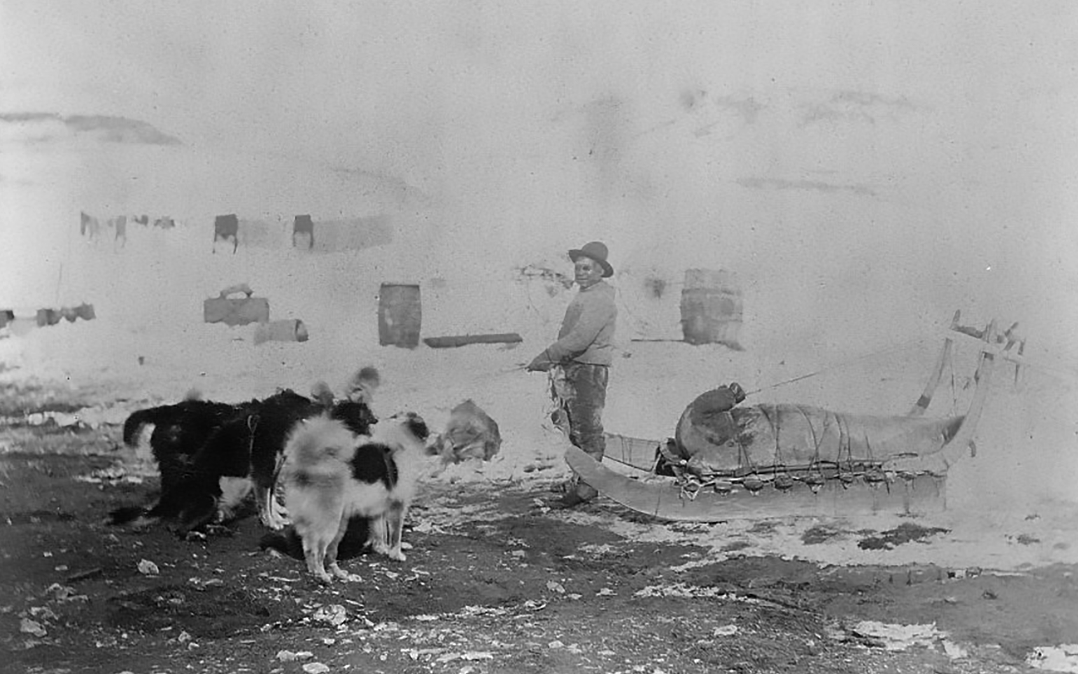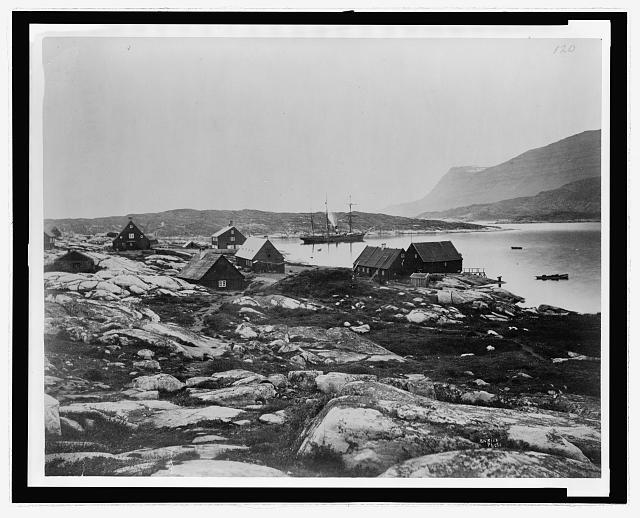Rice's Role on the Lady Franklin Bay Expedition
George Rice contributed remarkable photography to the ill-fated Lady Franklin Bay Expedition of 1881-1884, however his significance far transcends his role behind the camera. As a key member of the team led by Lieutenant Adolphus W. Greely, Rice contributed not only visually but also physically and emotionally, leaving a lasting mark on one of history’s most harrowing Arctic expeditions. While his images documented the stark beauty of the Arctic and the hardships of the journey, Rice's contributions to the expedition were multifaceted.
Sergeant George Rice was the official photographer on the expedition, and his images capture details of the men's lives in the vast, bleak Arctic landscape. His photographs not only recorded the expedition’s achievements but also served as enduring visual evidence of the challenges faced by the team. Rice is recognized as the first photographer to capture images of the Arctic region. In 1883, after the expedition team left Fort Conger for the prescribed meeting point with the rescue party, Rice took no more photographs (Library of Congress). Below includes several of Rice’s photographs:
Beyond his photographic duties, Rice assisted with crucial scientific tasks, including recording meteorological data, maintaining a tide gauge, and measuring water temperatures. He proved resourceful in practical ways as well, becoming skilled in dog sledding and even hunting muskoxen to supply the crew with food. His abilities extended beyond physical contributions; as a talented violinist, Rice played a key role in maintaining morale among the crew, earning him the respect and friendship of many, especially the seasoned members of the U.S. Army.
Rice also demonstrated extraordinary physical endurance and bravery, often risking his life to assist his comrades. Greely’s memoir Three Years of Arctic Service recounts numerous instances where Rice risked his life to aid his comrades:
“Ten hours’ struggle, with a helpless, frozen man, brought them to our abandoned winter quarters at Eskimo Point…Rice and Frederick on this day labored nineteen hours for the welfare of their comrades.”
Greely's Account of the Lady Franklin Bay Expedition of 1881-84
Rice’s actions exemplified selflessness and determination and a profound commitment to his crew’s survival. He repeatedly risked his life for the well-being of his comrades. Even as physical hardships mounted, Rice’s resolve never wavered, making him a figure of admiration and respect among his peers.
“How he made the fifteen long miles he hardly knew, but through Rice Strait he traveled in the darkness, across ice newly formed, which cracked and bent as*he passed.” (190)
Greely's Account of the Lady Franklin Bay Expedition of 1881-84
The success of Arctic expeditions often depended heavily on Indigenous knowledge and skills, and the Lady Franklin Bay Expedition was no exception. Jens Edward and Thorlip Frederik Christiansen were the two Inuit dog sled drivers on this expedition. Rice worked closely with them, gaining valuable knowledge about Arctic survival. In one iconic image below, Jens Edward returns from a hunt with a seal strapped to the sled, a poignant reminder of how critical indigenous knowledge was to the expedition’s survival. Rice’s photographs captured moments of Indigenous daily life and their interactions with the expedition, providing a rare glimpse into cross-cultural exchanges in the Arctic. These images, while limited in number, offer a narrative that underscores the importance of Indigenous contributions to exploration.

On April 9, 1884, while hunting for food near Cape Sabine, he succumbed to exhaustion and starvation. His death was deeply mourned by his comrades, who recognized that his extraordinary efforts had likely saved the lives of others. While his striking images remain some of the first visual records of the Arctic, Rice's significance lies equally in his physical, scientific, and emotional contributions to one of history’s most challenging Arctic explorations.



